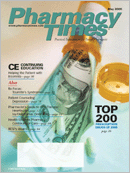Publication
Article
Pharmacy Times
Is Sleep-Driving for Real?
Author(s):
The New York Times recently published an article that dealt with the abuse of sleep medication in the United States. In some of the incidents described, the people for whom the drug was prescribed had allegedly engaged in sleep-driving. In an unusual phenomenon, these people woke up in the middle of the night after taking a controlled substance sleep aid and drove their motor vehicles.
Needless to say, this behavior often had bad results, with some sleep-drivers crashing into light poles or parked cars, or driving the wrong way on a street or expressway. Of course, adding alcohol or other drugs would only make matters worse.
According to the article, Wisconsin toxicology laboratories identified sleeping pill drugs in the bloodstreams of 187 arrested drivers from 1999 to 2004. In 2005, almost 30 million prescriptions were filled in this country for controlled substance sleep enhancers, and the numbers appear to be rising.
The question seems to be, how many of these cases are genuine sleep-driving, if it exists, and how many are the excuses of people who are abusing the medication and looking for a possible way out of potential criminal charges and/or civil liability? Your guess is likely as good as mine. Yet, there is not much question that this type of pharmaceutical has the potential to cause problems when it is abused.
Having an encounter with an impaired driver on the road can often be catastrophic for either or both parties involved. There is very little solace for the relative of a victim who was seriously injured or killed by a driver who was under the influence of a legitimately prescribed medication, instead of alcohol or an illegal substance. The unfortunate results are identical.
Pharmacists place warning labels on prescription bottles and instruct patients on the dos and don'ts of taking pharmaceuticals every day. Most patients will acknowledge and adhere to the wisdom given by their pharmacist, but some will decide that they can certainly drive after taking the first dose of their pain medication, benzodiazepine, or sleep enhancer.
The question is, when will patients take responsibility for their own actions? It appears to me to be common sense not to drive a motor vehicle shortly after you take your first dose of a medication, especially if warning labels adorn the bottle and your pharmacist is instructing you on the potential side effects. Only after you become accustomed to the drug and know that you are not impaired in any way would you want to guide a 4000-lb piece of metal into traffic.
As I have mentioned before, this idea seems to be common sense, but people do not always make commonsense decisions. In fact, common sense is one thing that is difficult to measure with any test, but rather "you know it when you see it."
My fear is that, sooner or later, someone is going to sue one of the pharmaceutical companies that manufacture one of the sleep-enhancing drugs. The allegation will be that the drug caused the after-hours traffic accident (sleep-driving) or the attack on a patient's spouse or wetting the bed. The situation does not matter?it just will be alleged that the event was not the fault of the person who took the medication.
In the meantime, pharmacists will continue to place warning labels on drug vials and politely explain the potential dangers of some medications, in hopes that they can prevent even one tragedy from occurring.
John Burke, commander of the Warren County, Ohio, drug task force and retired commander of the Cincinnati Police Pharmaceutical Diversion Squad, is a 38-year veteran of law enforcement. Cmdr Burke also is the current president of the National Association of Drug Diversion Investigators. For information, he can be reached by e-mail at [email protected], via the Web site www.rxdiversion.com, or by phone at 513-336-0070.







